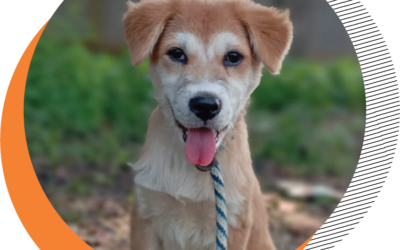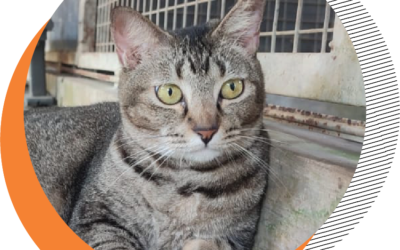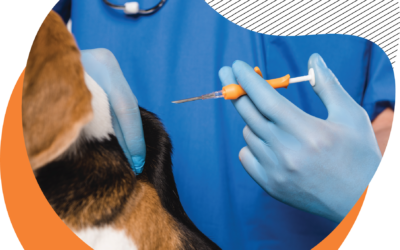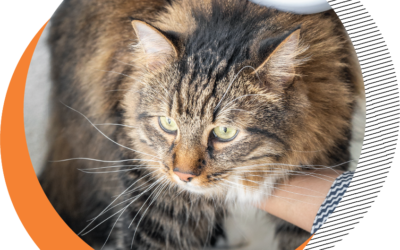
Tips for Feeding Orphaned Kittens
By: Maryam Smeer
The best condition for a baby kitten is in the care of its mother. However, not all baby kittens are that lucky. There are some conditions where the mother is absent or unable to care for her babies directly.
Baby kittens are very fragile. The chances of a baby kitten dying are quite high. Even if Pawrents take the best care of them, kittens are still fragile. Sometimes 1 in 4 baby kittens survive only the first week.
Despite this condition, Pawrents still need to pay attention to the kitten. Especially if the kitten is not in the care of its mother. Providing the best care is still something we must do. But if it turns out that the kitten died, Pawrents should not blame themselves. Even though the loss is hard.
Image 1. JAAN Domestic Shelter

This time, Animalwelfare.id provides some care tips for orphaned kittens. The following tips are for babies aged 0-3 weeks:
1. Regular Feeding
At this age, kittens need to be fed every 2-4 hours. At this age, baby kittens only need a diet of milk. This food is given using a bottle. If the kitten does not want to drink milk, Pawrents can wait until the next feeding time to try again. If the kitten does not take milk within two consecutive feedings, contact your veterinarian.
2. Formula Milk
Kitten Milk Replacement (KMR) formula will be given to all kittens that require bottle feeding. Pawrents can follow the instructions given on the KMR in serving it. Pay attention when dissolving the formula. The division is one part formula to two parts water. For the first few feedings, Pawrents can increase the amount of water slightly to dilute the formula. This is to help reduce indigestion.
Read Also : The Kitten Bottle Feeding Guide
3. Formula Storage
Reconstituted formula that has not been warmed up can be stored in the refrigerator for up to 24 hours. Powdered formula that has not been reconstituted should also be stored in the refrigerator after opening. Do not store powdered milk for more than 3 months.
4. Serving Amount of Milk
Prepare only enough formula milk, Pawrents. Dissolve the formula only in the amount needed. Baby kittens usually require about 4mL per 100g of body weight at each feeding. This means kittens need a total of about 30mL over a 24-hour period.
5. Watch Milk Temperature
Formula should be warmed before serving. This can be done by placing the cold KMR bottle upright into a cup of hot water. Check the temperature of the formula on the inside of your wrist before feeding each kitten. The temperature should be warm to the touch but not hot.
6. Deliver Safely
Once the milk is ready to serve, feed it safely. Pawrents should test the bottle teat and make sure the formula is dripping slowly. Kittens choke very easily (inhaling liquid into the lungs).
If formula comes out of the kitten’s nose, stop feeding immediately. If this happens, stop feeding until the kitten’s lung fluid has cleared completely. This is usually signaled by sneezing. If you hear crackling or popping sounds when your kitten breathes, or if you suspect your kitten has inhaled formula, contact your local Veterinarian immediately.
Read Also : Healthy Cats = Proper Diet
7. Ensure Kittens are Warm
When FeedingMake sure the kitten is not cold before feeding so that the food can be digested properly. Prepare the kitten for feeding by placing it on its stomach or wrapping it in a small towel like a taco if it is fussy.
8. Kitten’s position when fed
If wrapped in a towel, make sure the kitten can still squeeze with its front paws outside the towel and not in a supine position, which can cause choking. When lying on her stomach, make sure she is in an upright position with her head slightly tilted up and neck straightened (like she is nursing from mom). Support the lower body with the palms of your hands and hold the head
steady with your thumb and forefinger. Never express milk by
squeezing the bottle as this may cause choking/aspiration.
Bottle feeding takes practice and patience to master.
9. Don’t overfeed
Make sure Pawrents do not overfeed the kitten. Pawrents can check the fullness of its stomach while feeding. After bottle feeding, gently burp the kitten by placing it on its stomach with the palm of one hand and patting its back several times with the other hand.This will allow the swallowed air to escape, but you will not hear the kitten “burp”.
10. Clean the feeding bottle
Clean the feeding bottle with soap and water immediately after feeding. This is to avoid micro-organisms that can interfere with the baby kitten’s digestion.
11. Urination Stimulation
In kittens less than 3 weeks old, the urinary reflex still needs to be stimulated. Usually this is done by the baby’s mother. But for orphaned babies, Pawrents need to do it. Please note, the micturition reflex usually starts when the mother cat licks the kitten’s anogenital area. Therefore, caregivers should mimic this by gently massaging the kitten’s ano-genital area using a warm damp cloth or cotton ball. This should be done after every feeding, and each kitten should urinate and defecate at least once a day.
This time, Animalwelfare.id provides some care tips for orphaned kittens. The following tips are for babies aged 0-3 weeks:
1. Regular Feeding
At this age, kittens need to be fed every 2-4 hours. At this age, baby kittens only need a diet of milk. This food is given using a bottle. If the kitten does not want to drink milk, Pawrents can wait until the next feeding time to try again. If the kitten does not take milk within two consecutive feedings, contact your veterinarian.
2. Formula Milk
Kitten Milk Replacement (KMR) formula will be given to all kittens that require bottle feeding. Pawrents can follow the instructions given on the KMR in serving it. Pay attention when dissolving the formula. The division is one part formula to two parts water. For the first few feedings, Pawrents can increase the amount of water slightly to dilute the formula. This is to help reduce indigestion.
Read Also : The Kitten Bottle Feeding Guide
3. Formula Storage
Reconstituted formula that has not been warmed up can be stored in the refrigerator for up to 24 hours. Powdered formula that has not been reconstituted should also be stored in the refrigerator after opening. Do not store powdered milk for more than 3 months.
4. Serving Amount of Milk
Prepare only enough formula milk, Pawrents. Dissolve the formula only in the amount needed. Baby kittens usually require about 4mL per 100g of body weight at each feeding. This means kittens need a total of about 30mL over a 24-hour period.
5. Watch Milk Temperature
Formula should be warmed before serving. This can be done by placing the cold KMR bottle upright into a cup of hot water. Check the temperature of the formula on the inside of your wrist before feeding each kitten. The temperature should be warm to the touch but not hot.
6. Deliver Safely
Once the milk is ready to serve, feed it safely. Pawrents should test the bottle teat and make sure the formula is dripping slowly. Kittens choke very easily (inhaling liquid into the lungs).
If formula comes out of the kitten’s nose, stop feeding immediately. If this happens, stop feeding until the kitten’s lung fluid has cleared completely. This is usually signaled by sneezing. If you hear crackling or popping sounds when your kitten breathes, or if you suspect your kitten has inhaled formula, contact your local Veterinarian immediately.
Read Also : Healthy Cats = Proper Diet
7. Ensure Kittens are Warm
When FeedingMake sure the kitten is not cold before feeding so that the food can be digested properly. Prepare the kitten for feeding by placing it on its stomach or wrapping it in a small towel like a taco if it is fussy.
8. Kitten’s position when fed
If wrapped in a towel, make sure the kitten can still squeeze with its front paws outside the towel and not in a supine position, which can cause choking. When lying on her stomach, make sure she is in an upright position with her head slightly tilted up and neck straightened (like she is nursing from mom). Support the lower body with the palms of your hands and hold the head
steady with your thumb and forefinger. Never express milk by
squeezing the bottle as this may cause choking/aspiration.
Bottle feeding takes practice and patience to master.
9. Don’t overfeed
Make sure Pawrents do not overfeed the kitten. Pawrents can check the fullness of its stomach while feeding. After bottle feeding, gently burp the kitten by placing it on its stomach with the palm of one hand and patting its back several times with the other hand.This will allow the swallowed air to escape, but you will not hear the kitten “burp”.
10. Clean the feeding bottle
Clean the feeding bottle with soap and water immediately after feeding. This is to avoid micro-organisms that can interfere with the baby kitten’s digestion.
11. Urination Stimulation
In kittens less than 3 weeks old, the urinary reflex still needs to be stimulated. Usually this is done by the baby’s mother. But for orphaned babies, Pawrents need to do it. Please note, the micturition reflex usually starts when the mother cat licks the kitten’s anogenital area. Therefore, caregivers should mimic this by gently massaging the kitten’s ano-genital area using a warm damp cloth or cotton ball. This should be done after every feeding, and each kitten should urinate and defecate at least once a day.
Those are some tips on parenting an orphaned baby kitten. If there is any confusion or problems in parenting, don’t hesitate to contact and consult your nearest Veterinarian…
Source :
ASPCA Pro, Feline Foster Care Guide,
https://www.aspcapro.org/sites/default/files/aspcapro-feline-foster-care-guide.pdf
Related Post :
CONSEQUENCES FROM OVERPOPULATION OF STRAY ANIMALS
CONSEQUENCES FROM OVERPOPULATION OF STRAY ANIMALSContent By : Angelous Bobby Fernando, Founder Adopsi App*This information powered by ADOPSI APPRelated Post
STRAY ANIMALS, Who are they?
Stray AnimalsWho Are They?Content By : Angelous Bobby Fernando,Founder Adopsi AppA mobile application to adopt and adopting domestic animals, like dogs and catsScan fordownload!Related Post
THE IMPORTANT OF VACCINATIONS
Vaccination is an injection to weaken the virus/bacteria with a minimal dose with the aim of forming antibodies/immunity to certain diseases in accordance with the injected vaccine.Content By : Drh. Merry Ferdinandez, M.SiTHINGS YOU HAVE TO UNDERSTANDABOUT...
Do’s and Dont’s
Are you a responsible pet owner?Content by : Karin Franken,Co-Founder & Board Director JAAN DomesticIllustration by : Aya Diandara SalvatorA pet has to stay indoors, as your petshould always be part of your family.Always give nutritious food and dailyclean...
The Importance of Sterilization in Cats
By: Rahmadiva Pradesti - Universitas Negeri JakartaTranslator: Viviana Anyaputri Tanurahardja - Universitas Udayana Cats are animals with a seasonal polyestrous cycle, which means they experience periods of heat in certain seasons. During the heat period, if the...
The Impact of Overpopulation in Shelter
The Impact ofOverpopulationin Shelter The primary functions of animal shelters are to protect animals from abuse and to uphold their social, mental, and physical well-being. A balance between revenue and expenses, as well as between the size of the shelter and the...





